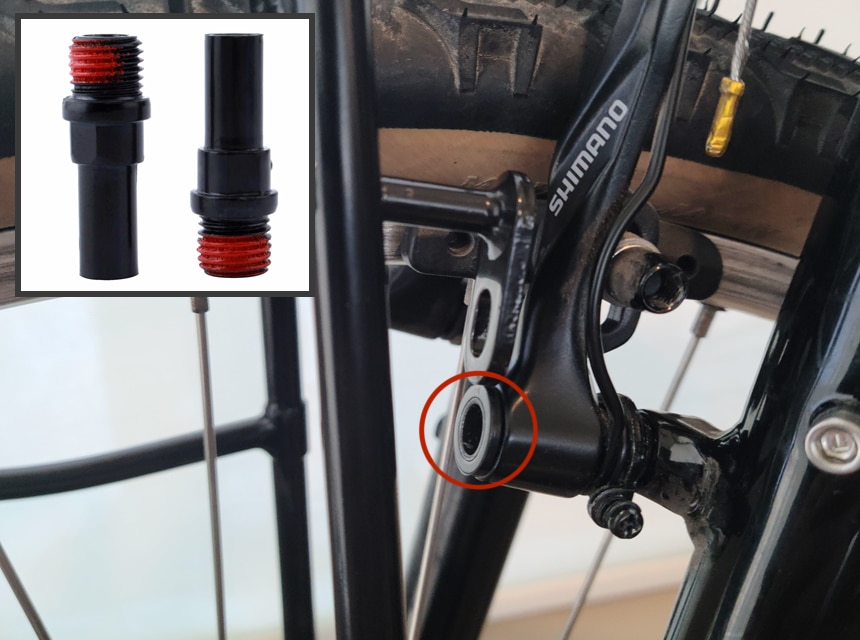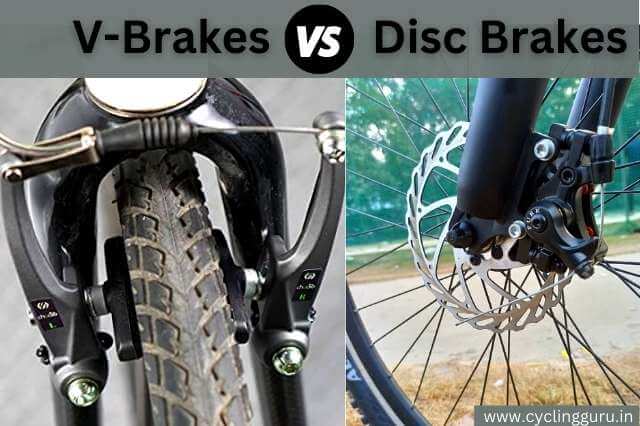Introduction: Understanding the Basics of Bicycle Brakes
When comparing disk brakes and V brakes for bicycles, it is essential to understand their basic functioning and primary purpose. Disk brakes, also known as hydraulic brakes, use calipers to clamp down on a rotor attached to the wheel hub, providing stopping power. On the other hand, V brakes consist of pads that clamp onto the rim of the wheel, generating friction to stop the bike. This article will delve into a detailed comparison of disk brakes vs v brakes, focusing on aspects such as performance, maintenance, and cost.
Performance: A Closer Look at Disk Brakes and V Brakes
Disk brakes and V brakes differ significantly in terms of performance. Disk brakes offer superior stopping power, particularly in wet or muddy conditions, due to their ability to grip the rotor directly. This feature ensures consistent and reliable braking, regardless of the weather conditions. In contrast, V brakes can be more susceptible to weather conditions, as the pads may not grip the rim as effectively when wet or dirty.
Moreover, disk brakes provide better modulation, allowing for more precise braking control. Modulation refers to the ability to apply the brakes gently or firmly, depending on the situation. With disk brakes, cyclists can make subtle adjustments to their braking, making them ideal for technical terrains or high-speed descents.
Performance: A Closer Look at Disk Brakes and V Brakes
Disk brakes and V brakes differ significantly in terms of performance. Disk brakes offer superior stopping power, particularly in wet or muddy conditions, due to their ability to grip the rotor directly. This feature ensures consistent and reliable braking, regardless of the weather conditions. In contrast, V brakes can be more susceptible to weather conditions, as the pads may not grip the rim as effectively when wet or dirty.
Further elaborating on the performance aspects, disk brakes have additional advantages over V brakes. One such advantage is heat dissipation. Disk brakes are better at dissipating heat generated during prolonged braking, such as long descents, reducing the likelihood of brake fade. Lever feel, or the sensitivity of the brake lever, is another area where disk brakes excel. They provide a more responsive and precise lever feel, allowing cyclists to better control their braking.
Maintenance: Comparing the Upkeep Requirements of Disk Brakes and V Brakes
Disk brakes and V brakes have different maintenance requirements. Disk brakes generally feature more complex systems, which necessitate periodic adjustments and bleeding to ensure optimal performance. Bleeding involves removing air from the brake lines, which can be a more intricate process compared to maintaining V brakes.
V brakes, in contrast, are relatively simple and easy to maintain. They typically require less frequent adjustments, and the maintenance process is more straightforward. Cyclists can often address issues with V brakes by tightening or loosening the cable tension, making them a more user-friendly option for those who prefer a simpler maintenance routine.
Maintenance: Comparing the Upkeep Requirements of Disk Brakes and V Brakes
Disk brakes and V brakes have different maintenance requirements. Disk brakes generally feature more complex systems, which necessitate periodic adjustments and bleeding to ensure optimal performance. Bleeding involves removing air from the brake lines, which can be a more intricate process compared to maintaining V brakes.
Potential Issues and Solutions for Disk Brakes
Disk brakes can experience various issues, such as contamination, pad wear, and rotor alignment. Contamination occurs when foreign substances, like oil or debris, come into contact with the brake pads or rotors, reducing their effectiveness. Regularly inspect and clean your disk brakes to prevent contamination. Pad wear is another concern, as disk brake pads typically wear out faster than V brake pads. Replace the pads as needed to maintain optimal performance. Rotor alignment, or “run-out,” can also affect disk brake performance. Use a truing tool to realign the rotor if it becomes misaligned.
Regular maintenance is crucial for disk brakes to ensure optimal performance and longevity. Adhering to a maintenance schedule, such as bleeding the brakes annually and inspecting the system for issues, can help prevent potential problems and extend the lifespan of the components.
Cost: Weighing the Financial Implications of Disk Brakes and V Brakes
When comparing disk brakes and V brakes, it’s essential to consider the financial implications of each system. Disk brakes are generally more expensive to purchase and maintain than V brakes, making them a more significant investment for cyclists.
Disk brakes require more intricate components, such as rotors, calipers, and brake fluids, which contribute to their higher upfront cost. Additionally, disk brakes typically have more complex maintenance requirements, necessitating periodic adjustments and bleeding. These tasks often require specialized tools and knowledge, which can add to the overall maintenance cost. In contrast, V brakes are relatively simple and easy to maintain, with fewer components and less complicated adjustment procedures.
While disk brakes are more expensive in the short term, they can offer long-term savings through improved durability, longer pad life, and better resale value. Disk brake pads often last longer than V brake pads, reducing the frequency of replacement. Furthermore, disk brakes are less susceptible to weather conditions, which can help preserve the brake system and extend its lifespan. When it comes time to sell the bicycle, disk brakes may also command a higher resale value due to their superior performance and desirability among cyclists.
Cost: Weighing the Financial Implications of Disk Brakes and V Brakes
When comparing disk brakes and V brakes, it is essential to consider the associated costs. At first glance, V brakes may seem like the more cost-effective option as they are generally less expensive to purchase and maintain. However, disk brakes can offer long-term savings that make the initial investment worthwhile.
Disk brakes are typically more costly than V brakes due to their superior performance and advanced technology. This initial expense can be mitigated by the benefits they provide, such as improved durability, longer pad life, and better resale value. Disk brakes are designed to withstand harsh conditions and last longer than V brakes, which can result in fewer replacement costs over time.
Additionally, disk brakes often have longer-lasting brake pads compared to V brakes. This extended lifespan can lead to cost savings in the long run, as you will not need to replace the pads as frequently. Furthermore, disk brakes are less susceptible to weather conditions, which means they are less likely to wear down prematurely due to exposure to the elements. This durability can contribute to a higher resale value for bikes equipped with disk brakes, as they are often considered a valuable upgrade.
While disk brakes can be more expensive to maintain due to their complex systems, regular maintenance can help prevent costly repairs. Ensuring that your disk brakes are clean, properly aligned, and functioning optimally can save you money in the long run by preventing damage and prolonging the lifespan of the components.
In conclusion, although disk brakes may have a higher upfront cost, their long-term savings, improved durability, and better resale value can make them a cost-effective choice for many cyclists. When weighing the financial implications of disk brakes vs. V brakes, it is essential to consider both the initial investment and the potential long-term savings.
Choosing the Right Brake System for Your Bicycling Needs
When deciding between disk brakes and V brakes, it is crucial to consider various factors to ensure you select the best brake system for your bicycling needs. By weighing the pros and cons of each system, you can make an informed decision based on your riding style, terrain, weather conditions, and budget.
Riding style plays a significant role in selecting the appropriate brake system. For instance, if you are a downhill or aggressive cyclist who frequently encounters long descents and wet or muddy conditions, disk brakes may be the better choice due to their superior stopping power and heat dissipation capabilities. However, if you are a recreational cyclist who primarily rides on smooth, dry surfaces, V brakes could provide adequate performance at a more affordable price.
Terrain and weather conditions also influence the decision between disk brakes and V brakes. Disk brakes excel in various terrains, including mountain biking and cyclocross, where mud and debris can negatively impact braking performance. In contrast, V brakes may be more suitable for casual, fair-weather riding on paved surfaces. However, disk brakes offer consistent performance in various weather conditions, making them a more reliable option for cyclists who ride in diverse environments.
Budget is another essential factor to consider when comparing disk brakes and V brakes. Disk brakes generally have a higher upfront cost and may require more frequent maintenance, which can add to their overall expense. V brakes, on the other hand, are more affordable and easier to maintain, making them an attractive option for budget-conscious cyclists. However, it is essential to weigh the long-term savings that disk brakes can offer, such as improved durability, longer pad life, and better resale value, when evaluating the overall cost-effectiveness of each brake system.
In conclusion, selecting the appropriate brake system for your bicycling needs requires careful consideration of various factors, including riding style, terrain, weather conditions, and budget. By understanding the advantages and disadvantages of both disk brakes and V brakes, cyclists can make informed decisions and invest in a brake system that best suits their unique requirements.







